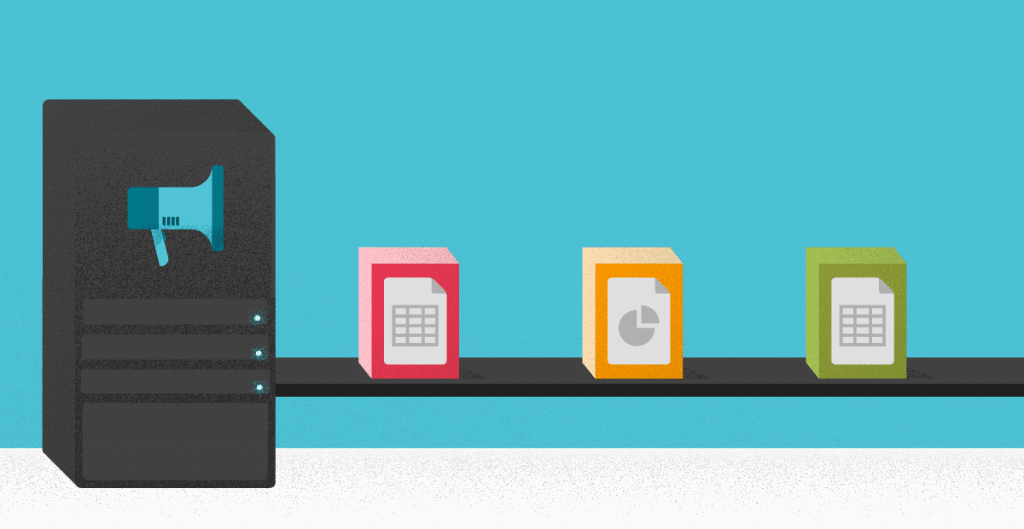Success in Digital Marketing requires strategic planning that involves the production and distribution of various contents capable of conveying the brand’s desired message.
With the appropriate materials, it is possible to reach the buyer persona and guide the company toward achieving short and long-term goals.
Each content produced by this department is fundamental for the business results, therefore being considered as true company assets. Thus, we should treat them as such.
Given the need to organize and make the best use of resources produced by marketing teams, it is becoming increasingly important to invest in Marketing Asset Management to achieve a competitive advantage.
Do you want to understand more about this concept and the best practices and tools that you can use to implement it effectively? Keep reading and learn:
- What is Marketing Asset Management?
- Why should your company use it?
- How to start managing your marketing assets?
What is Marketing Asset Management?
Marketing Asset Management refers to a set of techniques and actions implemented to optimize the way assets related to marketing are managed.
The idea is to centralize all materials in a single location, facilitating their analysis, editing, distribution and archiving.
To better understand the importance of this type of effort, you need to keep in mind what marketing assets are. As we indicated in the introduction, these are resources produced to achieve marketing objectives, whether they are related to branding, inbound, sales, growth, or any strategy.
Some examples of marketing assets are:
- blog posts;
- ebooks;
- infographics;
- landing pages;
- solution finders.
As you know, the success of actions related to these assets depends on your ability to create valuable experiences for your buyer persona.
Therefore, their production and distribution can never occur in a disorganized way, lacking well-defined processes. Thus, we can establish 4 stages in the lifecycle of a marketing resource: creation, management, distribution, and archiving.

Here, remember that such assets’ distribution is not always directed to the buyer or even someone outside the company. Many contents serve as sales enablement resources, being sent to sellers, managers, and other professionals involved in your business activities.
Why should your company use it?
Once you understand that the materials we’ve been describing are valuable assets to your company’s success, it’s easier to understand why it is vital to invest in Marketing Asset Management.
To emphasize this, in this topic, we will point out some of the main benefits that you can achieve when applying this approach. Keep reading!
Greater control over your assets
The contents you produce belong to your company and should, therefore, be handled with care.
Investing in techniques to centralize all these materials is essential to control what is done with them. In a Marketing Asset Management platform, you can remotely manage your teams’ workflow and ensure compliance with the editorial calendar.
Also, as it is a centralizing action, it becomes easier to find any type of content in your database. If you work with a robust Content Marketing strategy, you realize the importance of this factor.
The need to produce authentic content at a fast pace creates a large volume of materials, which can overwhelm you and your teams.
By centralizing them on a single platform, you can add tags, categorize them, and define who can access what. This way, you keep your assets within your radar and improve the security of your data.
Possibility of repurposing content
Because Marketing Asset Management provides a database containing all the content already produced, you can quickly revisit materials and recycle them.
How to do this? There are several ways!
For example, assume that you published a blog post about the 2018 Black Friday edition as part of your Inbound strategy. Imagine that such material received many visits, but as it is not evergreen content, it quickly lost its relevance.
Suppose you have easy access to this asset. In that case, you can analyze the possibility of reusing part of the content, making changes that make it coherent and duly equipped to answer the consumer’s questions.
Another way to repurpose content is by transforming static materials into interactive.
Do you know that landing page of yours that hasn’t delivered good results for a long time? The inclusion of interactivity could be what you need to hold the visitors’ attention and convince them that it is a good idea to register.
Of course, you will only make this decision if you monitor the landing page’s performance and know it is accessible for editing in your directory. Otherwise, you would need to create content from scratch, which consumes much more time and resources.
This way, the investment in Marketing Asset Management creates, basically, a wide variety of templates of the most diverse types, which can be used whenever they fit the strategy best.
Higher productivity
Ultimately, this is the most significant advantage of all. With the centralization of content on one platform and the automation of processes, your employees will spend less time looking for assets when they need to use them. This can be decisive, for example, for the accomplishment of a sale.
The contents, even those initially created for marketing purposes, can serve salespeople as sources of information on the main aspects of the products and services they are selling.
However, for this, the sales team needs to access the materials in a simple and extremely quick way.
Investing in Marketing Asset Management also means creating a substantial database for analyzing and optimizing your strategy. By studying the materials already created and observing their results, it is possible to focus your approach on creating content containing the elements that perform best in front of the audience.
How to start managing your marketing assets?
Now that you know the main advantages of streamlining your Marketing Assets Management, let’s progress on the subject and share some tips for implementing this approach in your company. Keep reading!
Perform an audit on all marketing assets
The first step is laborious, but crucial. It is necessary to map all your marketing assets, starting from those already produced to those not yet published.
It is essential to make a complete sweep so that no material is left aside. Then, it is necessary to evaluate the usefulness of each one of them.
Determine a status for each content: current, outdated, or requires update. Based on these labels, you can decide which ones you can discard to decrease the amount of information you will need to process.
It is also necessary to determine which assets are most valuable to the strategy in order to prioritize the most critical activities.
This decision depends on your company’s specificities, such as its budget, target audience, and primary objectives.
Prepare your team
Nobody knows more about a company’s marketing assets than the professionals who produce them.
Therefore, it is essential that they are part of mapping content and implementing new management practices. It is the manager’s role to prepare the teams for the new procedures.
As this type of management usually involves the use of software, it is important to evaluate your employees’ technical knowledge.
If you identify a lack of preparation to deal with a more complex platform, you can invest in training programs, often offered by the service providers themselves.
More than technical knowledge, your team must present the ability to adapt to the idea behind Marketing Asset Management. Therefore, it is essential to develop an organizational culture that encourages employees to perform processes quickly, giving them certain autonomy to make decisions.
Choose the best platform
There is no escape: the success of Marketing Asset Management depends on using an appropriate platform that meets your business needs.
Therefore, choosing the tool you will use is one of the most critical decisions in this process. Before taking the decision, carefully analyze the different options.
A good platform must have a responsive and intuitive interface, providing the necessary conditions for collaboration between teams. It must also have the capacity to process and store your assets, preferably facilitating their distribution to different channels.
Another point you should note is the type of support offered. Identify the customer service channels and make sure the service provider has a good reputation in this regard. This way, you will enjoy the platform without worrying about faults or non-compliance with the SLA.
Finally, of course, you should keep in mind the budget available for this type of investment. Many options offer free trials but then require you to subscribe to a premium plan in order to continue using its features.
A good idea is to look for companies capable of building a plan tailored to your specific needs.
Marketing Asset Management is the solution to content fragmentation. Its application centralizes your materials’ production and distribution, which become more accessible both for you and your employees.
Thus, this activity is one of the central pieces for the success and expansion of any company operating on the Internet.
If you are looking for a platform that can help you consolidate your marketing assets, get to know Visually — Rock Content’s solution for high-impact content production!








